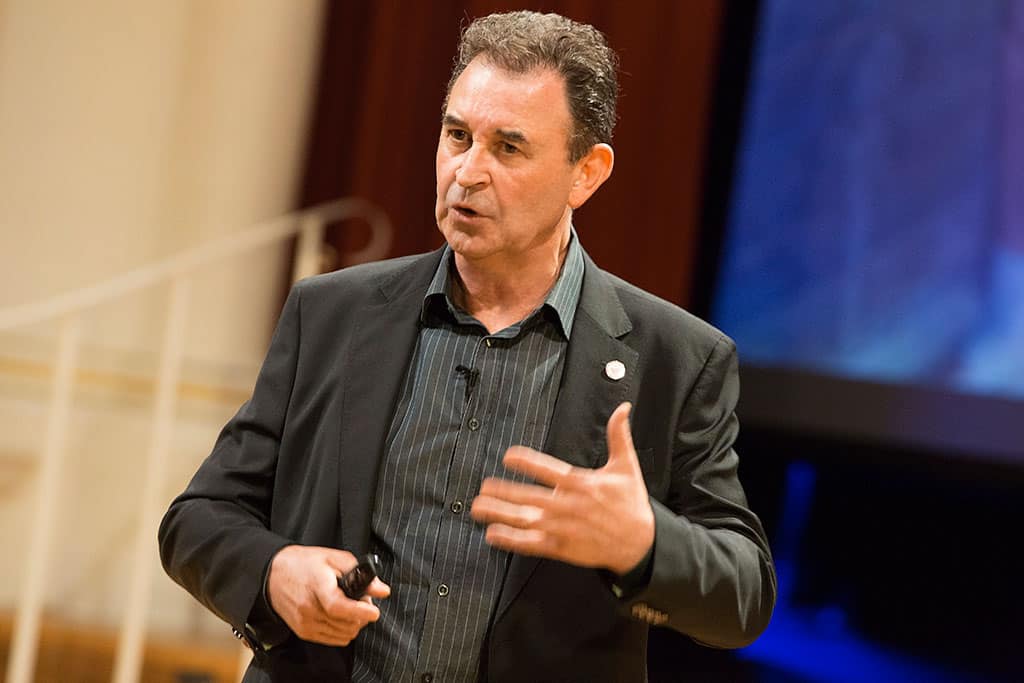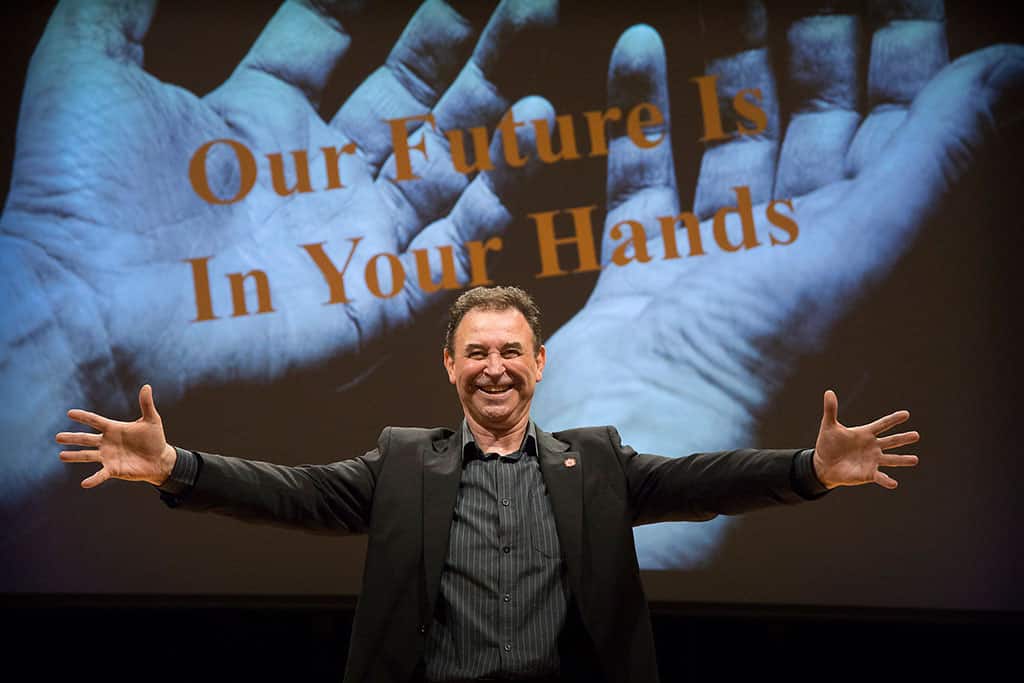Understanding The Leadership Crisis, In A World Of Complexity, Turbulence, And Continuous Change

Leadership is a highly contextualised phenomenon. In a world of complexity, turbulence, high-velocity, and continuous change, the context for leadership, as we know it, has been turned upside down.
Recently, we have witnessed what I call the three Ds of leadership – distrust, doubt and dissent. These are the outcomes when leaders fail to respond effectively to the changing context in which they must lead, and the expectations of their stakeholders.
Distrust and lack of engagement flag the need for leaders to rethink how to exercise leadership and engage their followers. Traditional leadership approaches no longer hold water.
The briefest glance at the television news or daily newspaper paints a vivid picture of the global and local leadership crisis, with escalating trends and all-pervasive images to dismay even the most casual viewer. I would contend that data, facts and figures say far more than even a thousand words.
This is the story the most credible research at the forefront of contemporary thinking tells us.
- Only 13% of employees worldwide are engaged at work (Gallup).
- 81% of CEOs rate leadership development programs as less than highly effective (PwC 2015, Annual Global CEO Survey)
- Of 7,500 business and HR leaders in over 100 countries, 55% judge the return on investment (ROI) of their current leadership development as fair to very poor, and less than 20% are confident they have the leaders they need to deliver on strategic priorities (Korn Ferry, 2015 Global and Regional Real World Leadership Report)
- Of 2,200 global HR leaders, 86% believe their organisation’s future depends on the effectiveness of their leadership pipelines, but only 13% are confident in their succession plans, with 54% reporting damage to their businesses due to talent shortages (Deloitte’s 2015 Global Human Capital Trends: Leading in the new world of work)
- Only 6% of executives feel ‘very ready’ to meet their leadership needs in 2016 (Deloitte’s 2016 Global Human Capital Trends. The new organization)
- 86% of the 1,500 world’s foremost global experts believe that the world is currently experiencing a leadership crisis (World Economic Forum. Outlook on the Global Agenda 2015).
- Only 7% of organisations feel they have a Best in Class leadership development program (Harvard Business School Publishing. 2016, State of leadership development survey).
- Only around 11% of organisations evaluate performance at an organisational level, and approximately 3% assess ROI.
In Australia, research conducted in 2016 by the Centre for Workplace Leadership, University of Melbourne revealed 75% of employees needed better managers and leaders. Gallup estimates the cost of the resulting lack of engagement is AUD $54.8 billion a year.
This precarious state of affairs exists despite the fact that organisations invest heavily in preparing their leaders. The 2016 Harvard Business Review article ‘Why leadership training fails—and what to do about it’ describes this growing multibillion dollar leadership development industry as failing to deliver results and asserts that corporations have become victims of ‘the great training robbery’. You don’t have to be a rocket scientist to know that urgent change is required.
The opportunity
If you are a seasoned CEO, you know that crises are opportunities to adapt, innovate and thrive. But only if you are ready for it.
Here are seven useful questions to ask yourself.
- How much is my organisation investing annually in leadership development initiatives?
- What is the ROI or ROE (return on expectation) of my expenditure?
- Do my people understand the new context?
- How do they respond to change?
- Do they see change as a threat or an opportunity?
- Are they confident to face the new context?
- Have my leaders adjusted their practices to adapt to the new context?
What to do next?
My research identifies the following practices will create adaptive leaders and high-performing organisations and deliver leadership results.
- Provide sense-making
Sense-making creates a picture that mobilises people to adapt to change and act. In times of uncertainty people want to know: what’s the story? Leaders become effective sense-givers through storytelling and speakership and can help others to interpret and respond positively to change. As a CEO, are you offering sense-making to your people?
- Build leadership capability
Traditional leadership approaches mistake management, authority, and power with leadership. True leadership involves exercising influence, whether you are in a position of power and authority or not.
Traditional approaches to leadership development are individual-centred only. They confuse ‘leader’ development with ‘leadership’ development. Leadership development historically has focused on enhancing the knowledge, skills and abilities of those holding senior managerial positions only. This focus needs to expand to improve the leadership capacity of the whole organisation, and to develop and improve the relationships and collaboration that knit all units, departments, and networks together.
- Move beyond competencies
Competency models emerged in the 1970s as a way of codifying the required behaviour for particular leadership positions. They drew on past successes by identifying relevant and effective behaviour as opposed to examining mindsets needed for the future. A more holistic and integrated approach to leadership development is required that addresses the many (less visible) mental, emotional, and psychological processes that often determine behaviour.
The solution is moving towards using ‘adaptive’ or ‘meta-competencies’ – the sets of knowledge, skills, and aptitudes that underpin or allow for the development of other competencies, especially those that people will need in the unpredictable future. Meta-competencies enable learning, adapting, anticipating, and creating change.
Both self-leadership (personal mastery) and leadership development require going beyond competencies, though they are grounded in competence and skills. Developing character is the key to effective leadership and given that leadership is a relationship between people, leadership effectiveness is related to everyone’s efforts to create positive relationships in the organisation. Kevin Cashman, CEO at Korn Ferry, explains that ‘competencies get us to the doorway of leadership, but character gets us through the doorway of leadership. Managers tend to control resources to get results, but leaders exert character to build a sustainable future.’
- Focus on creative thinking and innovation
Modern organisations need to innovate continuously to ensure their long-term survival and success. Leadership is the precursor of all innovation. Strategically, leaders establish work environments that are conducive to creative thinking and innovation, which in turn leads to a competitive advantage.
Leader behaviour is also an important predictor of innovative workplace behaviour (IWB) – the behaviour that guides the initiation and intentional introduction of new and useful ideas, processes, products or procedures. It’s paramount in today’s uncertain global economy where organisational renewal has become critical due to the increased competitiveness that accompanies accelerating technological change.
- Conduct impact evaluations
Evaluation is an important component of the leadership development process itself with three main benefits: extending the reflective dimension of the program by inviting participants to consider the value of the experience and how they apply it; gathering valuable suggestions for improvements to the programs; and fostering employee engagement and loyalty.
Written by: Sebastian Salicru.
Have you read?
Leadership Results: How to create adaptive leaders and high-performing organisations for an uncertain world. Wiley & Sons
Add CEOWORLD magazine to your Google News feed.
Follow CEOWORLD magazine headlines on: Google News, LinkedIn, Twitter, and Facebook.
This report/news/ranking/statistics has been prepared only for general guidance on matters of interest and does not constitute professional advice. You should not act upon the information contained in this publication without obtaining specific professional advice. No representation or warranty (express or implied) is given as to the accuracy or completeness of the information contained in this publication, and, to the extent permitted by law, CEOWORLD magazine does not accept or assume any liability, responsibility or duty of care for any consequences of you or anyone else acting, or refraining to act, in reliance on the information contained in this publication or for any decision based on it.
Copyright 2024 The CEOWORLD magazine. All rights reserved. This material (and any extract from it) must not be copied, redistributed or placed on any website, without CEOWORLD magazine' prior written consent. For media queries, please contact: info@ceoworld.biz
SUBSCRIBE NEWSLETTER









